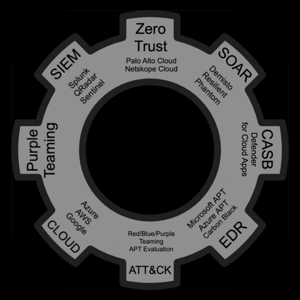Cheers David,
Just to clarify, I am aware of other capabilities, however when trying to draw up an action plan, other capabilities will be considered separately, ie ASR out of scope for current discussion purposes.
When I look at InTune, if I go to Endpoint Security | Manage | Endpoint Detection and Response, and create a new policy, the only settings I can really alter are in relation to:
- Sample Sharing
- Telemetry Reporting Frequency
With respect to your list above:
- What advanced settings am I missing in Defender UI that relate specifically to EDR and not another capability (if they relate to another capability, the configurations will be considered under the planning for that capability)
- For base templates, is there anything that I am missing (with regard to EDR rather than other capabilities)? If base templates is referring to Device Configuration Profiles, if I use an Endpoint Protection template (Win 10 and later), there are many options relating to other capabilities, but none specifically to EDR?
- Would noisy alerts come from just enabling EDR, or are we assuming that other capabilities have been enabled/configured?
- For attack simulation, I am assuming that this comes after enabling other capabilities
My main point here, is ultimately to get EDR up and running, you onboard to Defender, and select a couple of options. Anything else is related to other Defender for Endpoint capabilities (EDR capability can be used to tune further, however tuning is more likely after other capabilities are enabled/configured).
Does this make sense? In the MS deployment strategy [1], EDR is listed as priority 1 under "Service adoption order" - from what I can see, when devices are onboarded to Defender, EDR has technically already been adopted, and there are only a couple of options to tweak (that do not fall under remit of TVM, NGP or ASR).
I am assuming that using EDR without other capabilities, whilst obviously not giving full value, gives some value due to the fact that telemetry data is still gathered?
Cheers,
[1] https://download.microsoft.com/download/5/6/0/5609001f-b8ae-412f-89eb-643976f6b79c/mde-deployment-strategy.pdf

